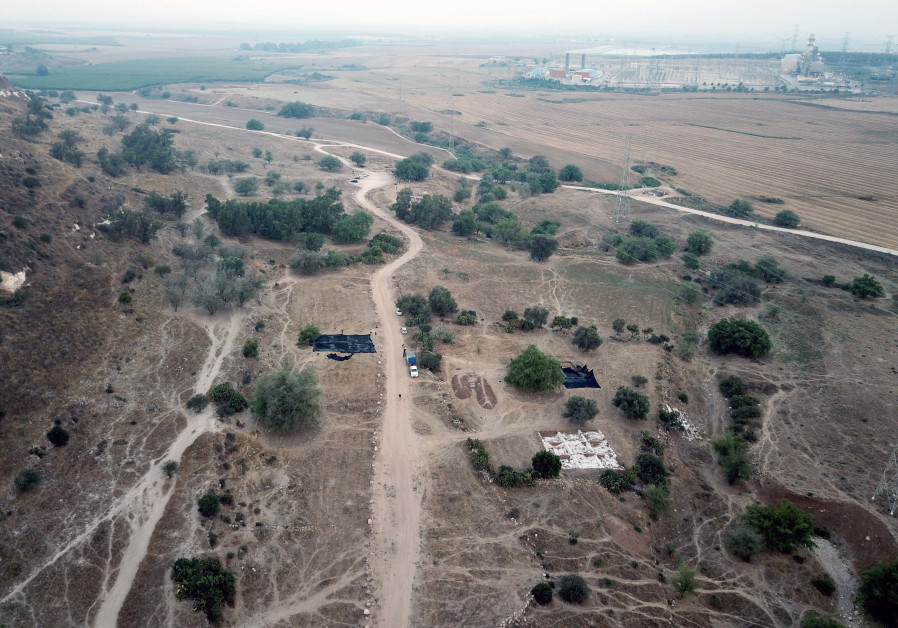Some 2,800 years ago, powerful Gath, the largest Philistine city and possibly the largest city in the ancient land of Israel at the time, was fighting for its survival, besieged by Hazael, King of Aram.
An individual bone projectile unearthed in the site likely offers a vivid testimony of its last days before capitulation, when raw material to manufacture weapons was probably depleted, and the city’s defenders were desperate to fight with any tool they could find, new research recently published in the journal Near Eastern Archaeology has shown.
“We have been excavating the destruction level by Hazael for many years,” Bar-Ilan University Prof. Aren Maeir, one of the authors of the paper, said. “We had known about the siege and the destruction regardless of this artifact. What is unique about it is that at that time, during the Iron Age, most of the arrowheads were made of metal. Bone arrowheads are very rare.”
Maeir has directed the Tell es-Sâfi/Gath archaeological project since 1996.
“At that time, King Hazael of Aram came up and attacked Gath and captured it; and Hazael proceeded to march on Jerusalem,” reads a verse in the 12th chapter of the biblical book of 2 Kings.

The biblical text was instrumental in understanding the vicissitudes of the city.
“Unfortunately, besides the reference to the destruction of Gath in the Bible, there’s no other textual mention,” Maeir noted. “However, the analysis of the finds from Tell es-Sâfi, including the pottery, carbon 14 dating and other types of finds all point out that the destruction occurred sometime in the late 9th century, around 830 BCE according to our estimation. From the analysis of who were the players in this region at the time, the most logical explanation is that this destruction was part of Hazael’s campaigns in various parts of the Levant.”
Previous to the bone projectile, in 2006 the archaeologists had uncovered a bone workshop.
As explained in the paper, the installation dates back to the same period of the individual arrowhead found in a different part of the site.
“The bones were modified in a uniform way, indicating that a standardized technique of modification was practiced and that its goal was the production of a limited repertoire of objects, which we suggested were small, longitudinal items to be used as awls or projectile points,” the authors wrote.
“It has been suggested that as similar tools and expertise were needed, ivory, bone, wood, and perhaps even stone working, were carried out in the same workshops. In contrast, the workshop at Tell es-Sâfi/Gath appears to have been dedicated only to bone working, and seemingly to the production of one artifact type—bone points,” they added.
The researchers deduced that the workshop, which manipulated cattle bones, might have been set up to cope with the emergency.
“Based on its typology, the individual arrowhead made of bone appeared to be the product of such a workshop,” Maeir said. “This may have been a weapon that was made at the site, perhaps as the battle was occurring, and perhaps the reason why they were doing it was because, due to the fact that they were under siege they might have run out of supplies of other materials. Therefore, instead of producing the arrowheads using bronze or iron, they started making them with the available materials.”
The point was some 8 cm. long.
“While bone arrowheads might have been less effective than those of other materials, they were still effective and used both in combat and for hunting,” Maeir remarked.
In the paper, the authors explained that the arrows’ deadliness was determined by their ability to wound the victim, who would eventually succumb to the bleeding, rather than to kill at impact.
However, the bone arrowheads did not save the Philistine city.
After Hazael captured and destroyed Gath, the city was abandoned for about a century. Later it was briefly conquered by Judah during the reign of Hezekiah between 715 and 687.
Excavations at Tell es-Sâfi/Gath are ongoing and a new season is set to take place in the month of July.
